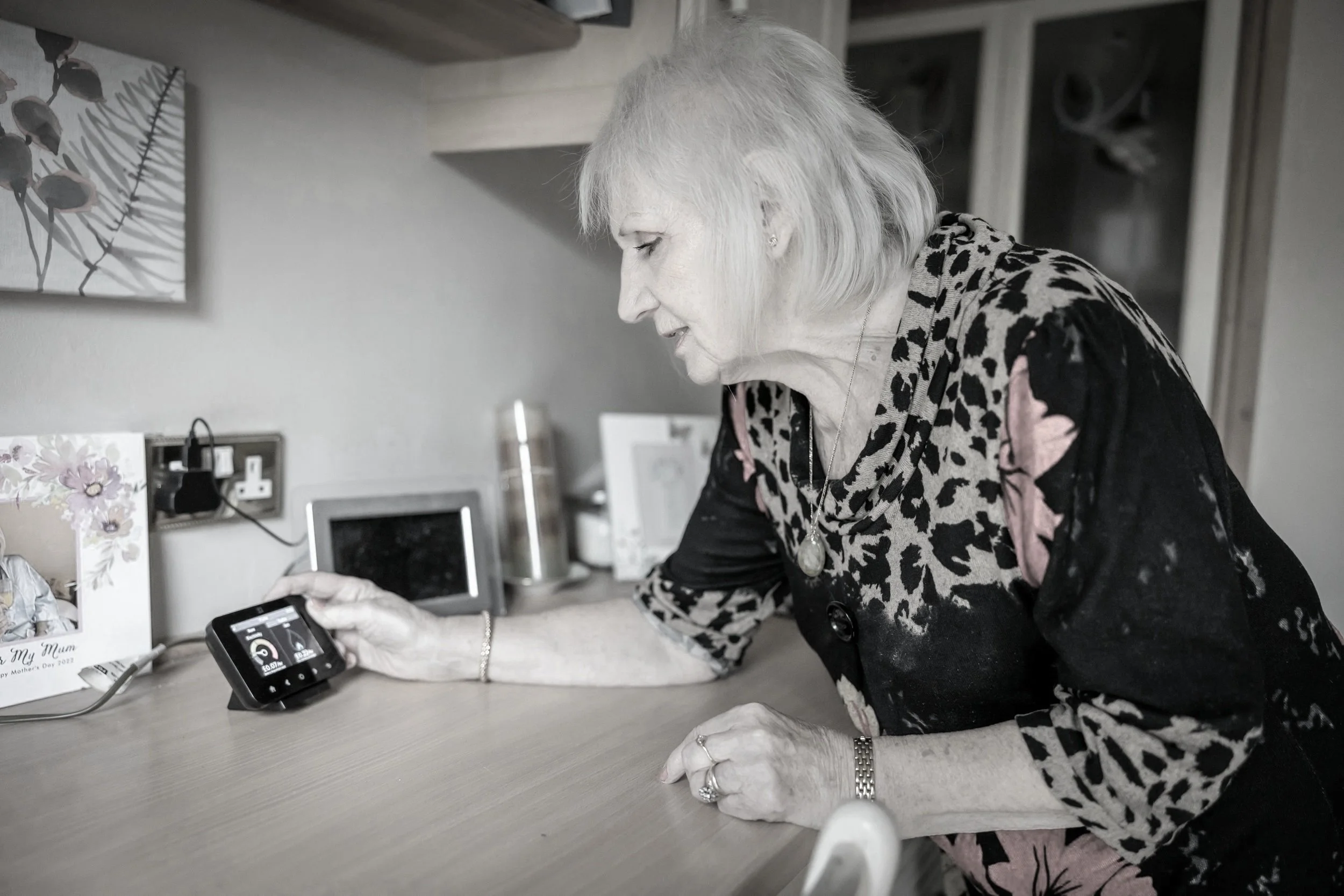Client Success
Voice Technology as a Bridge—Reducing Social Isolation Among Older Adults
The Area Agency on Aging (AAA) launched a countywide initiative to address social isolation among older adults and vulnerable residents—distributing 1,300 voice-enabled smart speakers (Google Home) to test their effectiveness as a digital companion.
Early usage metrics showed activity, but critical questions remained:
Could an inanimate device genuinely reduce feelings of loneliness
Would adoption vary based on tech literacy, language fluency, or self-efficacy?
And without emotional or behavioral insight, how could the agency determine whether to scale or reimagine its digital inclusion efforts?
The goal: Go beyond usage data to understand the lived experience of older adults using voice AI—capturing emotional impact, identifying risks, and ensuring future programs were grounded in equity and effectiveness.
Challenge
We conducted an in-depth qualitative study with 19 participants who had used the devices for at least three months. Interviews were held remotely via video to ensure safety and accessibility. Scripts were tailored based on pre- and post-program survey data to uncover both emotional response and functional experience.
Participants reflected a wide spectrum of user types:
Tech-savvy and novice users
Native and non-native English speakers
Individuals with varying levels of confidence in navigating technology
This diversity allowed us to surface meaningful patterns around:
Adoption pathways
Emotional attachment and expectations
Barriers and workarounds
Perceived usefulness in daily life
Approach
The result: The research revealed that smart speakers offered more than convenience—they provided emotional consistency and comfort for many participants. However, this benefit was highly dependent on reliability and individual agency.
Key insights included:
Lonely participants formed emotional attachments to their devices, using them for music, meditation, weather updates, reminders, and even companionship.
When devices failed or felt unpredictable, some users reported increased anxiety or disconnection—highlighting the critical role of trust in technology.
Female immigrant participants demonstrated notable resilience, often learning independently to maintain autonomy.
Persistent users leveraged workaround strategies—pointing to self-efficacy as a predictor of success.
Among active users, 11 of 13 reported daily engagement, suggesting strong potential when design, training, and expectations are aligned.
These findings directly informed the design of a follow-on tablet program, influencing:
Tiered support structures for different levels of digital confidence
Personalized onboarding protocols
A broader shift from measuring technology access to technology effectiveness
Our work helped the agency shift the narrative—from devices as endpoints to tools for emotional resilience and inclusion—setting a new standard for community-focused tech programs.
Impact
Why our work matters
We identify how trust, emotion, and reliability shape engagement—especially in underserved populations.
for UX & Product Teams
We provide the evidence to build human-centered programs that scale with sensitivity and equity.
for Innovation Leaders
for Strategy & Policy Stakeholders
We surface lived experience to design tools that foster autonomy, dignity, and inclusion.
How can we support you?


